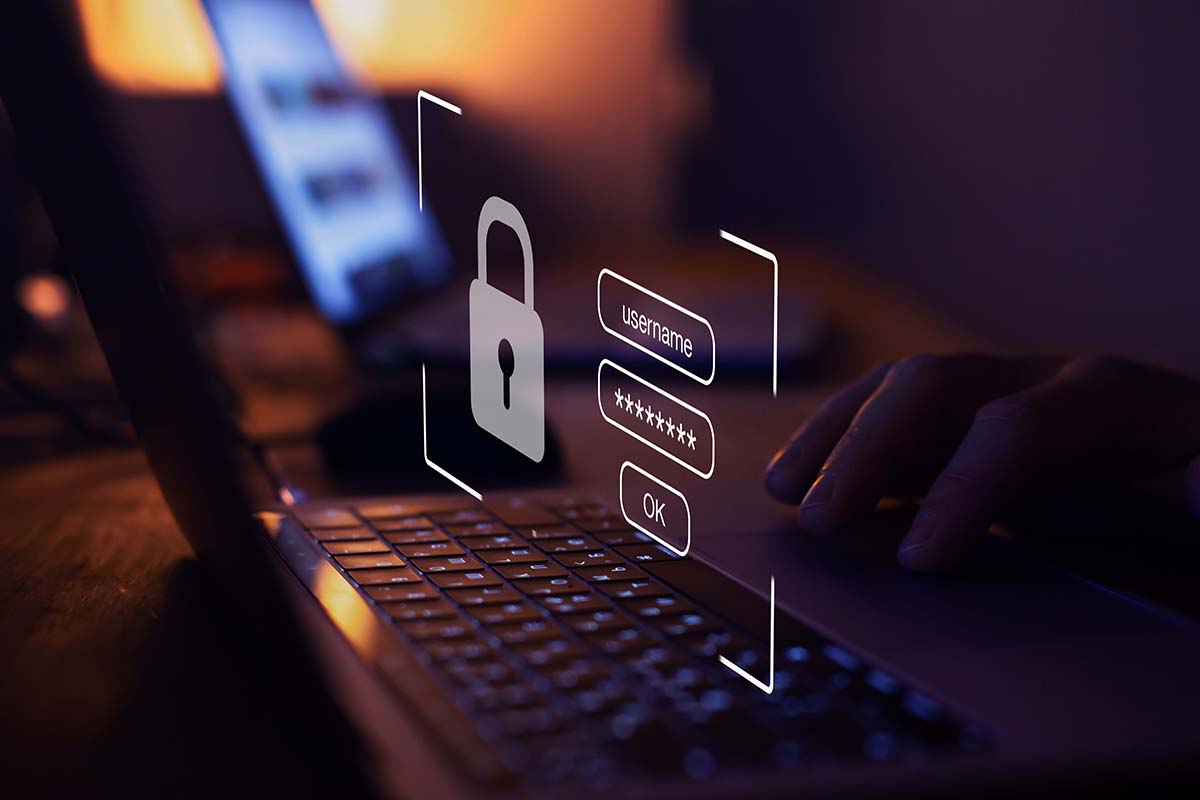Cybersecurity vs Cloud Computing: What’s the Difference?
In today’s digital world, cybersecurity and cloud computing are key to protecting data and assets. They work together to keep technology safe from cyber threats. But what makes them different, and how do they protect your digital stuff?
Key Takeaways
- Cybersecurity protects digital assets and data from unauthorized access. Cloud computing lets you store and process data online.
- Knowing the differences between cybersecurity and cloud computing helps in making a strong security plan.
- Combining cloud computing and cybersecurity makes data safer and more secure against cyber threats.
- Knowing both cybersecurity and cloud computing can lead to many job opportunities in tech.
- Choosing between keeping data on-premise or in the cloud is important for protecting data and managing infrastructure.
Understanding Cybersecurity
Cybersecurity is all about keeping digital systems, networks, and data safe from unauthorized access and cyber-attacks. It’s a set of measures and strategies to keep information safe and secure. With our world more connected than ever, protecting against cyber threats like data breaches and malware is key.
Read More: What is Cybersecurity? Types, Threats, and Cyber Safety Tips
Definition and Scope of Cybersecurity
Cybersecurity is a wide field that includes many activities and technologies to protect digital assets. It uses security controls like firewalls and encryption to keep systems and data safe. It also covers how to handle security incidents and keep up with security levels.

Importance of Cybersecurity in Today’s Digital Age
In today’s digital world, cybersecurity is very important. With more of our lives online, the risk of cyber-attacks has grown a lot. It’s key for keeping sensitive info safe, keeping businesses running, and keeping customers’ trust.
With strong cybersecurity best practices, organizations can avoid big risks. By tackling cybersecurity challenges and using security best practices, companies can better protect their digital assets.
Read More: Why is Cyber Security Important?
Cloud Computing Explained
Cloud computing has changed the game in today’s digital world. It lets organizations easily access and use computing resources over the Internet. This means businesses can use cloud services without needing their hardware.
Cloud computing offers many advantages. It makes it easy to scale up or down quickly, which saves time and money. It also makes working together and accessing data from anywhere easier.
But moving to the cloud comes with its own set of challenges. Keeping data safe and following rules are big concerns. That’s why using smart tools to manage and secure cloud services is key.
Now, with more companies using different cloud providers, things get more complicated. They need to use smart strategies to keep their cloud safe and make the most of it.
As cloud computing grows, companies need to keep up. They need to understand both the good and the bad sides of cloud computing. This way, they can make the most of this powerful technology.
Cybersecurity vs Cloud Computing
In today’s digital world, cybersecurity and cloud computing are key for businesses. They are related but have different focuses and roles. Companies need to know the differences to keep their data safe in the cloud.
Cybersecurity Focuses on Data Protection
Cybersecurity aims to protect digital assets and data from threats. It involves stopping, finding, and handling attacks like malware and phishing. Cybersecurity experts make sure data and systems are safe, private, and available.
Read More: Different Types of Cyber Security: A Comprehensive Guide
Cloud Computing Manages Computing Resources
Cloud computing is about using computing resources like storage and power over the Internet. Companies can easily get more or less computing power as they need it. Cloud computing comes in types like public, private, or hybrid, each with its own security needs.
Cybersecurity and cloud computing work together, but they focus on different things. Good cloud security needs both cybersecurity and cloud computing skills.
Companies must think about the pros and cons of on-premise and cloud solutions. They should look at data sensitivity, rules, and how much control they want over their tech. Using a hybrid cloud can offer a good mix of security, flexibility, and cost.
Data Protection: On-Premise vs Cloud
As technology changes, companies must think about how to protect their data. They need to look at the good and bad of using on-premise or cloud solutions. Data protection is key in the debate over cybersecurity and cloud computing.
Evaluating Data Security Measures
With on-premise data storage, companies can control who gets in, how systems work, and how to back up data. However, it takes more work and might require special IT skills. On the other hand, cloud-based storage is more flexible, grows easily, and saves money. However, companies must check the best practices for cloud security and the cloud security risks of their providers.
When looking at data security, consider these points:
- Access controls: Use strong identity and cloud access management to make sure only the right people see sensitive info.
- Encryption: Use top-notch encryption to keep data safe, both when it’s stored and moving, and follow cloud compliance rules.
- Backup and disaster recovery: Have good backup systems and plans for disaster recovery to keep important data safe.
By looking at the pros and cons of on-premise vs. cloud and using strong data protection steps, companies can keep their important data safe. They can also follow the rules.
Network Security and Cloud Services
In today’s cloud computing world, keeping networks safe is key for companies. As more businesses use cloud services, they need to make sure their on-premise systems and cloud resources are connected safely. They also need to protect the cloud itself.
It’s vital to have strong network security to fight off cyber threats in the cloud. This means using firewalls, VPNs, and controls to keep cloud services and cloud access security safe.
Having good network security helps companies deal with cloud vulnerabilities and manage cloud risk management. By securing their networks, companies can keep their important data and cloud apps safe. This ensures their cloud resources are private, whole, and available.
Read More: Cybersecurity vs Network Security: What’s the Difference?
Key Network Security Measures for Cloud Environments
- Firewall configuration and management
- Secure remote access through VPNs
- Robust access control and identity management
- Network segmentation and isolation
- Regular monitoring and incident response
By following these network security tips, companies can make their cloud setups safer and more reliable. This ensures they can deliver cloud services securely and without issues.
Information Security and Cyber Threats
Keeping information safe is key in cybersecurity. With more companies using cloud computing, they face many cyber threats. These threats can harm the safety, trustworthiness, and access to their important data.
Read More: Cybersecurity vs Information Security: What’s Different?
Common Cyber Attack Vectors
Cybercriminals use weak spots in how people act, software, and networks to attack. Here are some common ways they strike:
- Phishing emails that try to get users to share login details or download harmful software
- Malware like ransomware and viruses that can break into systems and mess up operations
- Unwanted attempts to take over cloud resources and data
- DDoS attacks that flood systems and make them unavailable
Read More: Top 10 Most Common Types of Cyber Attacks
Mitigation Strategies for Cyber Threats
To fight these security issues, companies need to use strong cybersecurity steps. These include:
- Training and educating users to avoid social engineering tricks
- Keeping antivirus and anti-malware tools up to date to find and remove threats
- Tight access controls and extra login steps to stop unauthorized access
- Secure network setups, firewalls, and systems to watch for and act on suspicious actions
- Good data backups and recovery plans to keep business running after an attack
By using these cybersecurity best practices, companies can lessen the security risks and security challenges from cyber threats. This helps keep their information security safe in cloud computing.
Read More: Exploring the Various Types of Cyber Security Threats
Cloud Infrastructure and Cyber Risks
Organizations moving to cloud computing face new security challenges. Risks like data breaches and service disruptions can hurt businesses a lot. To tackle these, companies need strong cloud security and to watch out for new cyber threats.
Addressing Cloud Computing Risks
Dealing with cloud risks means taking steps from many angles. First, use cloud security best practices like strong access controls and data encryption. Also, having a mix of cloud services can make your system more resilient against service problems.
Using cloud threat intelligence is also key. It means watching for and understanding cyber threats early. This way, companies can protect their cloud better and act fast if there’s a breach.
Managing cloud risks needs a full plan that covers people, processes, and tech. By focusing on cloud security and keeping up with threats, companies can use cloud benefits safely. This helps them avoid cyber risks.
Cybersecurity Measures for Cloud Environments
More companies are moving to cloud computing. This means they need to keep their cloud data safe. It’s important to use strong cybersecurity in the cloud to fight off cyber threats. Here are some key tips for cloud security:
- Cloud access management: Use strong access controls, like multi-factor authentication, to keep unauthorized users out.
- Encryption: Protect sensitive data in the cloud with encryption. This keeps data safe and ensures it’s only seen by those who should see it.
- Logging and monitoring: Set up detailed logging and monitoring to watch user actions, system events, and security issues in the cloud.
- Cloud compliance: Follow industry rules and standards, like GDPR, HIPAA, or SOC 2, to keep cloud data secure and private.
- Cloud security best practices: Use security best practices, like keeping software up to date, setting up secure settings, and using firewalls and intrusion detection systems.
By using these cybersecurity measures, companies can make their cloud safer. This helps reduce cloud computing risks and keeps cloud operations in line with cloud compliance. It’s key to manage cloud access and follow security best practices for strong cloud security and resilience.
Cloud Computing vs Cybersecurity: Which is Easier to Learn?
Many people wonder which is harder to learn: cloud computing or cybersecurity? It really depends on your background, interests, and goals. Both fields need a good grasp of technology and security, plus the ability to keep up with changes.
Cloud computing is about delivering and managing computing resources over the Internet. You’ll need to know about virtualization and services like IaaS, PaaS, and SaaS. It’s a bit challenging but suits those already in tech fields like software development or system administration.
Cybersecurity is all about keeping digital stuff safe from hackers and threats. You’ll dive into security protocols, risk management, and how to handle cyber attacks. It’s a tough field but offers many areas to specialize in, like network security or ethical hacking.
How easy or hard it is to learn cloud computing or cybersecurity depends on your tech skills and career goals. Both fields are in demand and can lead to great careers. But the easiest path for you will depend on your strengths and what you like.
Key Considerations:
- Cloud computing focuses on the delivery and management of computing resources and services over the Internet.
- Cybersecurity is concerned with protecting digital assets, systems, and networks from cyber threats.
- The learning curve for cloud computing may be relatively steep, but it often aligns well with the skills of software developers, system administrators, and IT professionals.
- The learning curve for cybersecurity may be more challenging, but it offers a diverse range of specializations that can cater to various interests and aptitudes.
- The ease of learning cloud computing or cybersecurity depends on an individual’s prior technical knowledge, problem-solving skills, and career aspirations.
Career Prospects: Cloud Cyber Security Salary
The need for experts in cloud computing and cybersecurity is growing fast. This makes the career options and pay in these areas very appealing. Ark Solvers looks into the cloud cyber security salary trends and the job market. It shows what affects pay and if a career here is a good choice.
Reports say the average cloud cyber security salary is between $80,000 and $120,000 a year in the U.S. This depends on experience, certifications, and the job within the company. Those with top skills in cloud security, risk management, and handling incidents are especially wanted and can earn more.
When compared to traditional cybersecurity jobs, the cloud cybersecurity salary is often the same or even more. This is because having skills in both cloud and security is very valuable to employers. The rise of cloud services and the more cyber threats companies face have made cloud security key to their IT plans. This has led to more job openings and better pay.
For those thinking about a career here, the outlook is bright. Is cloud security a good career? Definitely, yes, as the need for skilled people is set to keep going up. With the right mix of technical skills, industry knowledge, and certifications, you can have a great and well-paying career at the crossroads of cloud computing and cybersecurity.
Integrating Cloud Computing and Cybersecurity
Organizations are moving to cloud computing fast. It’s key to blend cybersecurity with cloud tech well. Ark Solvers shares top tips for safe cloud use. They guide you on how to make a strong, safe cloud setup.
Secure Cloud Migration Strategies
Moving to the cloud is big, but it brings new security issues. Ark Solvers suggests a detailed plan for cloud moves. This plan focuses on security first. It includes doing risk checks, setting up strong access controls, and using cloud security tools to protect your data during the move.
Collaboration Between Cloud Engineers and Cybersecurity Professionals
Keeping cloud systems safe needs teamwork between cloud experts and cybersecurity pros. This teamwork helps us use everyone’s skills to make strong security plans. They make sure cloud computing and cybersecurity work well together. This keeps your cloud data and systems safe.
Cloud-Native Security Controls
- Use the cloud’s built-in security like identity checks, encryption, and network safety.
- Choose cloud security tools and services to improve monitoring, threat finding, and handling incidents.
- Keep an eye on your cloud’s security level to find and fix weak spots.
Following these secure cloud tips lets organizations use cloud computing fully while keeping strong cybersecurity. The mix of cloud and cybersecurity is vital for moving through the digital world safely and quickly.
Conclusion
In today’s fast-changing IT world, cybersecurity and cloud computing go hand in hand. Knowing how these two areas work together helps protect digital assets and tackle new cyber threats. By combining strong cybersecurity with cloud computing’s benefits, companies can fully use the cloud safely.
As cybersecurity and cloud computing merge, companies need to stay alert and ready. Finding the right mix of the cloud’s ease and cybersecurity’s strength helps businesses grow and stay safe in the digital world.
Putting cybersecurity and cloud computing together is key to a modern IT plan. It needs a deep understanding and a promise to keep learning and getting better. By doing this, companies can create a strong, safe digital base. This supports their growth, innovation, and edge in the fast-changing tech world.
FAQ
What is the difference between cybersecurity and cloud computing?
Cybersecurity protects digital systems and data from threats. Cloud computing delivers computing resources over the Internet. It’s about keeping information safe, no matter where it’s stored.
How important is cybersecurity in today’s digital age?
Cybersecurity is key today because of many cyber threats. It keeps our digital stuff safe and secure.
What are the key benefits of cloud computing?
Cloud computing is great because it’s flexible and saves money. It lets businesses use computing resources easily without owning them.
What are the key distinctions between cybersecurity and cloud computing?
Cybersecurity and cloud computing are related but different. Cybersecurity protects digital assets from threats. Cloud computing is about using computing resources over the Internet.
How can organizations ensure data protection in a cloud environment?
Companies need to check security in both cloud and on-premise setups. They should look at access controls, encryption, and backup plans.
How does network security play a role in cloud computing?
Network security is key in both cybersecurity and cloud computing. It ensures safe connections to cloud resources and protects the cloud itself. This includes using firewalls and VPNs.
What are the common cyber attack vectors, and how can they be mitigated?
Phishing, malware, and unauthorized access are common threats. To fight these, companies should train their staff, use advanced threat detection, and have plans for emergencies.
How can organizations address the unique cyber risks associated with cloud infrastructure?
Companies can tackle cloud risks by following best practices, managing multiple clouds, and using cloud threat intelligence. This helps them stay ahead of threats.
What are the key cybersecurity measures for cloud environments?
For cloud security, use access controls, encryption, and logging. These steps help keep cloud services safe and protect data.
Is cloud computing or cybersecurity easier to learn?
Learning cloud computing or cybersecurity depends on your background and goals. Both need a good grasp of technology and security. The path you choose affects how easy it is to learn.
What is the cloud cyber security salary outlook?
Cloud and cybersecurity jobs are in demand, offering good pay. Your experience, certifications, and role affect your salary and career prospects.
How can organizations integrate cloud computing and cybersecurity effectively?
Combining cloud and cybersecurity means using cloud security controls and secure migration plans. It’s about protecting cloud assets and using the cloud’s benefits fully.




